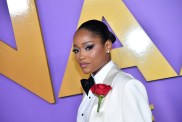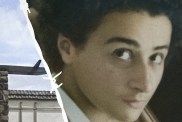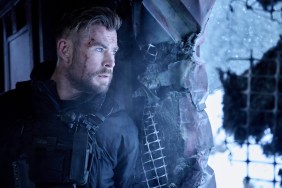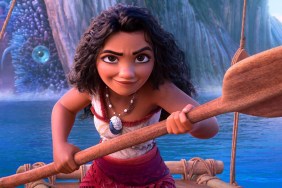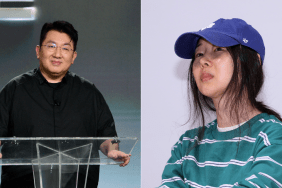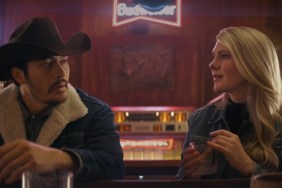Finally at the end of our long day at Pixar Animation Studios, ComingSoon.net sat down with director Dan Scanlon and producer Kori Rae for a couple brief interviews which you can read below.
ComingSoon.net: I remember speaking to Pete Docter I think a couple of years ago probably when “Up” was coming out – I guess it was 2009. Had you already agreed to do that this was going to happen and you were going to direct it?
Dan Scanlon: Yeah.
CS: Was it something that had been floating around for longer?
Scanlon: I think at that point we were already working on that. We take so long with these kinds of movies to get them right, but I believe around that time we had already started on it, yeah.
CS: It’s really interesting seeing this process today because we watch Pixar’s movies and they always look amazing but you never really understand the process goes into them, the thought that goes into the lighting and the story. It’s interesting to see all the layers that go into these movies particularly the technical stuff.
Scanlon: Well, I didn’t know a lot of the technical stuff, honestly. I mean, being in story, you’re really just sorta in story. Story goes for a long time, but it’s usually about wrapped up once you really get into the heat of production so you really see it come out the other end looking great and you have no idea how it got there. So for me, it was an incredible learning experience. I always tell people here–because we have the opportunity to–we screen the movies when they’re in process here for the employees – really to get notes and see how it plays with an audience. Sometimes people will say, “Oh, I don’t want to see it until it’s finished. I don’t want to spoil the surprise.” I think, “Are you crazy? Like, no one gets this opportunity.” It’s cool to see it half done. I mean, it’s cool to see these decisions being made, to see storyboards, to see the layout, to see half finished animation. Why would you not want to see that?
CS: I’ve seen a lot of animated movies in storyboard form and a lot of half things, and it’s sort of like..
Scanlon: It pulls you out a little bit.
CS: Yeah, it takes you out a little. It’s hard to watch it, yeah. One of the interesting things about this one is that there are a lot more characters than I would say probably any other Pixar movie. I was trying to think of any Pixar movie that has as many supporting characters, as many voices. How did you approach developing this with so many characters and how did you decide to cast them?
Scanlon: You know, it’s funny, I never thought of the movie as being big or that we were making a big movie at the time, but I guess we knew it was taking place on a campus, so it was going to have to be pretty populated. But, the story really dictated what it needed and it needed a lot of people to be involved just by the nature of what it is. So the fun part was then taking these not just secondary, but tertiary characters and giving them personalities. I mean, it’s college, so we felt like “Oh, god, there’s so many types of people we remember from college” and we really get to have fun with making these more specific characters and letting each one be memorable. That was really important to us, that each character feel like a specific person that you knew at one point in your life.
CS: What about the voice casting? Was that John Krasinski in the beginning there?
Scanlon: Maybe.
CS: Okay, I know his voice pretty well. I was curious how you went about casting because there must be a couple people who just come in and do a couple lines.
Scanlon: You know, again, we tried to find the right voice that has the spirit of the character that we want, and sometimes even listening to actors’ or actresses’ voices while looking at a picture of the character and just trying to find something that fits that voice. We were lucky on this film that a lot of the people that were in the film were fans, not just of Pixar, but of “Monsters, Inc.” They were people who really had an incredible respect for the film, and therefore, were excited to be a part of it. I really feel like it comes across in the film. You can tell people were just more game to play and be broad, or bring a real emotion to it because they really loved the original movie and just wanted to be a part of it.
CS: One of the interesting things about this, besides being a prequel, it is a straight comedy. From what we’ve seen there aren’t a lot of big moving scenes like some Pixar movies that have you in tears.
Scanlon: I will say you haven’t seen the whole movie yet.
CS: Yeah, I guess so.
Scanlon: Definitely the first act there’s a little more of the comedy. There’s lots of comedy throughout the whole film, but it was really important to me–because I love a movie to make me laugh and cry–and I like to go on those journeys with characters. So it was really important to me that this movie have that too. I think a big part of where you’ll see that is in Mike’s story and of the obstacle he’s coming up against, and in just the relationship between Mike and Sully. But, yeah, it was important to us to have that as well, to be a well-rounded story, and a story worth doing, a story worth watching.

CS: As far as putting jokes into something you’ve developing for years and there’s always the chance of the joke appearing elsewhere. For instance, the slug joke, but now there’s a movie called “Turbo”
Scanlon: Oh yeah.
CS: That must be tough because you spend so much time developing it and then some other movie comes along and they have a similar sight gag.
Scanlon: Yeah, it’s all just coincidences and in the ether and, yeah.
CS: When something like that happens, do you feel like you need to cut the joke from the movie or do you think it works and it doesn’t matter?
Scanlon: Yeah, you know, we just focus on the movie we’re making and make it as good as we can, so yeah.
CS: Obviously there are a lot of great new characters in this and there’s a lot of potential to make a sequel to the prequel. Is that something which is kind of out there? For instance, Hardscrabble must have an interesting backstory, so is that stuff that’s something you think about?
Scanlon: To wrap my brain around right now?
CS: Yeah, well, I know you want to focus on making one movie, but there’s all sorts of ideas I’m sure you can come up with.
Scanlon: Yeah, well, you know, there’s so many things that we throw out in the moment. There’s probably lots and lots of stories out there, but you’re right. Right now, it’s just enough to focus on the one, but yeah.
CS: Will we find out why Randall goes bad? Is that covered in this movie?
Scanlon: We will see Randall to his conclusion, yeah.
CS: Might we see an “Animal House” ending, where we learn what happens to everyone
Scanlon: Oh, yeah, yeah.
CS: We know what happens to Mike and Sully but do you think what happens to other characters might be saved for future shorts?
Scanlon: Yeah, no, I think we’ll have – I will say we will have conclusions for all the characters that hopefully are satisfying.
CS: I wanted to ask about the music in this and who you are using for this. Are you taking a very different approach to this?
Scanlon: Yeah, well, we are. We’re using Randy Newman to compose the film. He’s doing it, which is great because he is “Monsters, Inc.’s” music, you know, he captures that so well. But what’s fun is Randy really embraced the fact that this is its own movie and that this is Mike’s story, so he was really writing music specifically for this music. The characters, they’re at a different point in their life. They’re not whatever 20, 30 year old guys with a cool job, single guys. They’re college students now. He’s adapting the music accordingly and making sure that it seems familiar to “M.I.,” but still very different and specific to this film, which has been really kind of the funnest part about working on this music.
CS: Have any of those 80s college movies had an influence on the music?
Scanlon: Oh, that’s a good question. I don’t know, maybe in places. I don’t know about in the score.
Before that, we sat down with Dan’s producer Kori Rae for a shorter interview, which you can read below, but we basically asked her some of the same questions:
ComingSoon.net: So we talked earlier about the voice casting, and even though it’s focused on Mike and Sully, there’s a lot of side characters, so at what point do go about finding the cast for those smaller roles? Is that stuff you can usually wait on until later in production?
Kori Rae: No, for this, obviously we started early with John and Billy. Then, as soon as the story started to solidify and we started learning who these characters were and casting them, there was probably about an eight month period where we did a bulk of the recording and the story kept evolving and we kind of kept adding characters. When we started out, I thought, “Ah, we’ll probably have maybe 10 or 11 characters,” and we ended up recording 18 or 19 cast members for the film and plenty of additional voices and additional children’s voices on top of that. But the main cast is about 18.
CS: I’m curious about how late in the game you can add jokes to the mix because things like the slug is a standalone joke, but I’m curious about how much of that is from the beginning and how much comes later when someone’s like “We need a joke here.” Is that stuff you can add later in the game as well?
Rae: You can. You can. We had a few what we called gag sessions on the film. A lot of the jokes were written in at the time, but then you’re focusing so much on the story that you want to make sure that you give yourself the opportunity to go back through and add that pass of humor. We did that a couple of times, but I mean, I think we added something as late as two weeks ago, and a small thing, but it’s just a matter of the schedule. But we always are trying to plug stuff in especially with humor. So anything time something comes up or an idea comes up or a note comes from somebody, one of the brain trusts seeing the film, we always jump on it because you can’t have too much.

CS: You bring up the brain trust, and obviously Pete Doctor directed the first movie. It’s funny I spoke to him probably in 2009 and he was obviously brainstorming about this one. Did he have other things he wanted to focus on?
Rae: You know, yes. I think he had other original ideas, and he definitely wanted for Pixar to make this movie. He was very involved in the early development of this story and everything. He was there as a really great mentor for Dan and I. We met with him regularly and showed him stuff in progress, and made sure that he was there to kinda oversee the film and make sure that we were doing it justice. (Laughs)
CS: One of the really amazing voice castings is Helen Mirren, which is funny since you would never really think of her doing an animated film.
Rae: I know.
CS: It’s also because Dean Hardscrabble was originally a male character and this is the third time the gender of a character has been changed for her.
Rae: (laughs) I know, right.
CS: What was your pitch? How did you get her interested? Did you just say the Pixar name and she goes, “Yeah, sure.”
Rae: Well, to her credit, she’s so amazing that she said, “I want to come meet you guys and talk to you and find out more about the project.” So she came here and had lunch with John and Dan and I, and we talked to her about the film, talked to her about the character. Because she’s unbelievably, she’s so humble, she said, “I just want to make sure that I’m the right person for your film and for this character,” in a completely humble way. But, that was fantastic and she was just an absolute pleasure to work with. She’s such a great, great, great actor and a lovely person.
CS: Was she game to do improv and throw things out there as well?
Rae: Oh yeah, yeah. She and Dan really worked at the first recording session, she came having read the script and came with ideas and questions. She was completely prepared and engaged already when she showed up. So, she wanted to work with Dan for a while on the first session just to figure out what the voice should be. They tried a bunch of things. She tried different accents. She tried different demeanors. They went through a whole bunch of stuff for a few hours and finally landed really kind of using her voice with a couple of tweaks, but she really wanted to make sure that it was right for the character and right for the film, and that Dan had what he wanted. So it was really, really fun. It was a great collaborative…
CS: The visual evolution of the character is very interesting so was she able to see the final version of it when she was doing the voice or did it change a lot after that?
Rae: You know, that’s a good point. She actually did. I think she had the drawings. The model wasn’t final yet, so at the first session, it was mostly designs and drawings that we had. Then, in future sessions, the model was finished and we brought something like the printout of the final model for her to see, but it was still in progress when we talked to her, so we just used designs.
CS: You’ve been working for Pixar for 20 years, so how have things changed working with Disney? How does this movie fit in as far as what Pixar has been doing up until this point? This is a straight comedy and it’s also a prequel, which has to be different from things like “Up” and “WALLE” and other standalone films.
Rae: Yeah, the experience is similar. It’s the same. I mean, we go about things the same way and it’s the same process, and focusing on the story is still the most important thing, and that’s what we do. I think that has remained the thing from day one because it comes from John Lasseter, who’s all about story and about how you kind of work collaboratively to iterate, to put up a story and show it to a few people and tear it down and put it back up and tear it down and put it back up. So, that is part of every Pixar movie, and it was just as big a part of this one.
CS: Do you guys test screen stuff outside of Pixar?
Rae: Yes.
CS: You do?
Rae: We do.
CS: I was always curious about that, how much of it is test screening for other people.
Rae: We do, and yeah, so we do it once, yeah.
And that was it for our trip to Monsters University but look for our interview with “The Blue Umbrella” director Saschka Unseld very soon.

